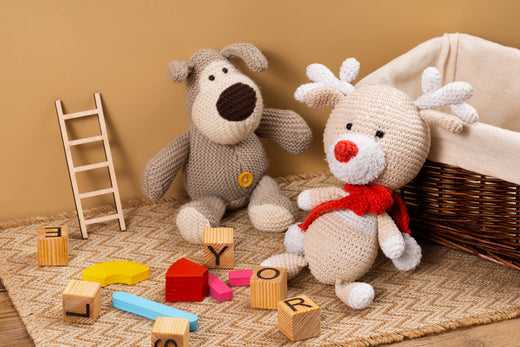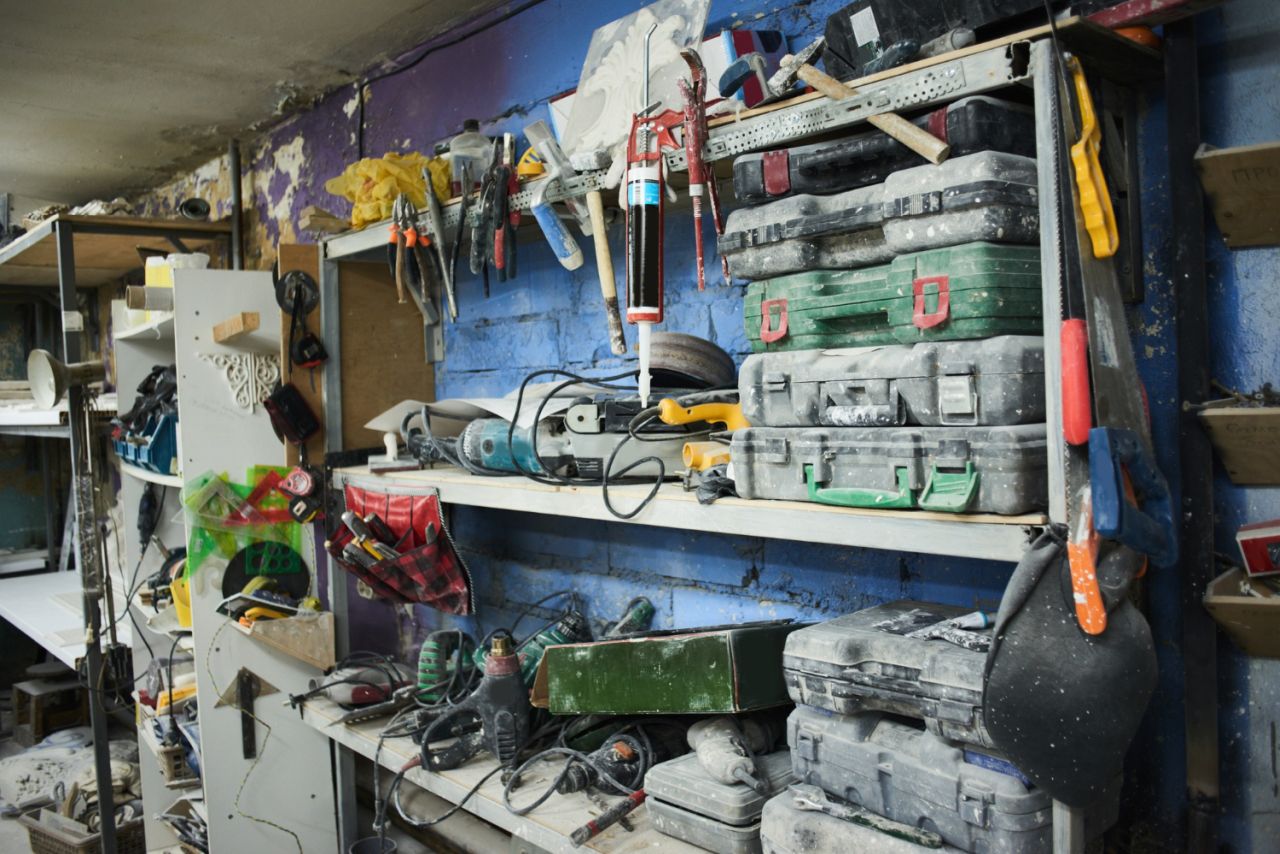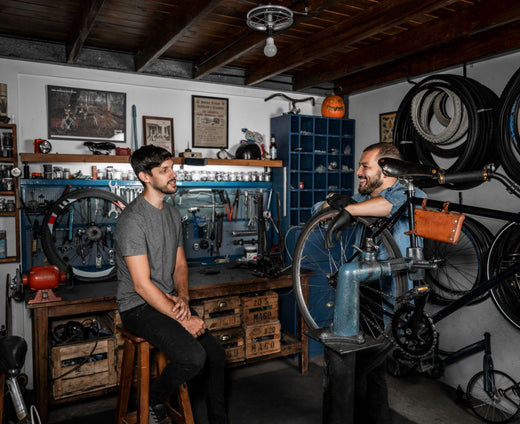It's almost the holiday season, which means it's time to start planning how you'll decorate your home.
Get it done before the holiday festivities on Christmas Day, or get a head start on your New Year's resolutions.
No matter the motivation, you'll need a plan and to stick to it if you want to get everything done.
As such, we think that adequate storage is essential to the project's success.
You can keep more than just cars in your garage; you can also keep things like appliances, furniture, and gardening supplies in there.
This is the perfect spot to stow away unwanted possessions.
Whether your garage is spacious and empty or crammed to the gills, you can make better use of the space by employing contemporary storage methods.
You can get a lot more use out of your garage by implementing a few basic strategies.
Let's check out some garage storage solutions that can help you out.
Garage Storage Guide
We've put together this manual to simplify your garage storage experience. If you're ready to reclaim your garage, here's what you need to do:
Getting Started
You need to get off to a good start if you want to maximise the potential of the space above your garage.
Getting ready is the most important part of remodelling your garage.
Get your garage organisation project off on the right foot by checking out these easy tips.
Start Organizing
After clearing out the garage of unnecessary items, you can move on to putting things in order.
While the specifics of your strategy will change depending on what you're putting in storage, there are some universal steps you can take to make the most of your unused garage space.
Monthly Check-Ups
Over the course of a weekend, you can clean and organise your garage, but by Monday morning, everything will be back to normal.
In just a few short weeks, your garage storage could be a complete disaster.
Checking in once a month to make sure your garage is still in order is a good idea.
Set aside some time every month to take stock of your garage supplies. The success of your storage efforts depends on your ability to monitor the state of your garage.
This monthly inspection can also serve as a general audit of your home's storage systems and organisation.
A yearly garage cleanout is recommended on top of the monthly inventory.
Removing unused items from storage on a regular basis makes it much simpler to maintain order in the garage.
Get the Whole Team on Board

While monthly check-ups can help you avoid slipping into bad habits, you also need the rest of your family on the same page. If your family doesn’t know how to store items in your garage correctly, all your efforts may go to waste.
Once you rearrange your garage, speak to your family about the best ways to keep the garage in good condition.
If your children understand how to store items in your garage properly, you’ll have a much better chance of staying organized throughout the year.
It’s also a good idea to ask family and friends to help with your initial garage revamp project.
While reorganizing your garage might feel like an impossible task when you’re working alone, having help from loved ones can make the process much quicker.
Adding a GarageSmart® SmartWall is a quick and easy method to upgrade your garage's storage capabilities.
CHOOSING THE RIGHT CONTAINER
Packing and preparing items for storage requires selecting the appropriate box or container.
Cardboard boxes are more practical than plastic ones because they are lightweight, inexpensive, and simple to transport.
They are sturdy, have convenient handles, and can be stacked practically anywhere if you buy them at a local storage facility.
However, cardboard's drawbacks could be more significant than its benefits. Heat and moisture quickly cause them to deteriorate.
As a result, your belongings may be ruined, as well as mildew or mould may begin to grow in the box if you plan to use this method for an extended period of time.
Use caution if opting for this material, as freebies from the local supermarket or corner store are likely to be damp and could lead to mould growth.
The best choice for long-term storage, then, seems to be plastic containers.
Although they are more expensive, these bags will protect your belongings from insects and mildew.
Plus, you can save money by shopping at Amazon or a local shop.
You can find green alternatives to use recycled materials and do your part for the environment.
CLEAN YOUR GARAGE AND ORGANISE YOUR SPACE
In many households, the garage serves as a dumping ground for anything no longer wanted.
Thus, you may find that your garage is already too crowded to accommodate any additional storage needs upon packing up your house.
In fact, garages have become the de facto dumping ground for things you have no idea where else to store, so much so that keeping a car in one is a rarity.
Garage cleaning is a great method for getting rid of old junk and unwanted items that have been collecting dust.
One potential benefit of cleaning out the garage or a room is discovering more space for storage than you had thought was possible.
The space could also be put to more practical use, such as housing a washing machine in its own room.
The main idea here is your garage wasn't designed to serve as a storage space, and that doing so has some drawbacks.
Because of the nature of the building, garages typically lack adequate insulation. That's how mould can start growing: when there's a combination of high humidity and a lack of proper ventilation.
Instead of gambling with your belongings' safety, store them in a self-storage unit where they will be safe from the elements.
AVOID HAZARDOUS AREAS
Let's start by bringing up some potential hazards to your health and safety that arise from keeping things in your garage. In fact, it could be anywhere in the house.
Don't stack boxes over drains or store anything else that could trap water there. There's a chance that one is preventing a wave of water from inundating your garage.
Preventing obstructions in the drainage system is a good idea.
This next one is which most people will overlook. There should not be any obstructions in the path to the circuit breakers or air ducts.
It's important to be able to get to the electricals in case of an emergency or a blackout. It could be dangerous if there are obstacles in the way.
You can also avoid ever noticing any problems with either scheme if you hide them from view.
If you're looking for things to outfit your entire garage, GarageSmart® got you covered. We can turn your cluttered garage into a clean, crisp, highly functional area for your home.
Don't forget to leave room for doors, either, so that you can get into and out of the garage.
It's surprising how many people get hurt every year when sorting through boxes. There could be a serious problem if you can't leave the room immediately. Avoid placing obstacles in the way of anything at all costs.
STACKING AND STORING
You should begin by checking the labels on your cardboard and plastic containers to make sure they are in order.
Finding your most prized possessions may become much less of a hassle.
Create a system for stacking shelves, with more frequently used items near the front and at eye level, larger, heavier boxes held at the bottom, and less frequently used items atop the stack.
Avoid placing items on the floor if possible.
BOOK IN REGULAR CLEAN-UPS
Whether you keep your belongings in a garage or rent storage space, this rule remains the same.
After you've gotten your apartment or home in order, it's time to start a routine of regular upkeep.
You don't want to revert to your old ways and find yourself right back where you started within the next six months.
That's why it's important to mark your calendar or diary with a reminder to give yourself a quick makeover every month or two.
This will save you from having to go through a full-scale decluttering, which, as we all know, is a stressful and exhausting process.
This will allow you to keep track of everything and prevent them from becoming a burden when things inevitably go wrong.
An inventory of your home's contents is another useful tool.

Having this information handy will be useful when it's time to locate the Christmas tree but also decorations.
You may choose to use either a paper and pen or an electronic spreadsheet.
Our advice is to get an inexpensive or free app for your mobile and then go paperless.
Every item, along with its location and any accompanying photos, can then be recorded and stored.
What to Store in Your Garage?
Items that belong in the garage tend to share a common thread: they are things you employ in the great outdoors.
Car supplies
Most people who own cars keep them in garages or keep them in close proximity to their homes.
Therefore, it makes sense to keep car supplies like windshield wiper fluid and tyre inflators in the garage. Items like a roof rack or camping equipment that you frequently bring with you in your car can be stored in the garage as well.
You can save floor space in your garage by suspending large items like roof racks from the ceiling or walls.
This will make it easier to maintain a clean garage floor for driving. Garage storage cabinets or a plastic rack with bins are good options for smaller items.
You'll be able to maintain order and quickly locate whatever you need thanks to this system.
Yard and Gardening Tools
Storing outdoor equipment and tools in the garage makes perfect sense.
Equipment like shovels, hoses, and outdoor extension cords are essential, as are lawnmowers, gardening tools, flower pots, and more.
The garage is an ideal place to keep bulky outdoor supplies like potting soil in bags and ice melt in buckets.
To keep tools organised and within easy reach, you might want to hang them from pegboard or something similar.
Outdoor Toys
Products designed for use in the great outdoors can be safely stored in a garage when not in use.
Toys for kids, pool floats, bicycles, and outdoor seating all fall under this category.
If you need to clear some floor space, try hanging things like lawn chairs from the wall.
The toys can be stored in wire or transparent plastic containers for easy access.
Infrequently Used Items
The garage, such as the basement or attic, is an excellent hiding place for seldom-used possessions.
The garage is an excellent place to keep things you don't need right now but plan to get rid of later.
Remember that garages are best for storing durable, weatherproof items.
You're better off storing fragile items like paperwork and electronics in the basement or attic.
What Not to Store in Your Garage?
There are three main types of items that you should avoid storing in the garage: those that pose a fire hazard, those that attract pests, and those that are easily damaged.
Hazardous Materials
Be especially cautious around combustibles and other potential fire hazards.
It's a good idea, for instance, to keep propane tanks, which are prone to leaks and fires, somewhere other than the garage.
Try putting them in a shed or other outdoor location with plenty of airflow. Garages are suitable places to keep gasoline.
It must be stored in a safe container away from any potential sources of ignition, as well as from curious young minds and furry friends.
In addition, it's preferable to err on the side of caution when disposing of potentially dangerous materials that have outlived their usefulness.
Don't just shove them in the garage and forget about them; take the time to try to get rid of them properly.
Items That Attract Insects or Vermin
Even if you think you've closed off your garage properly, insects and rodents are experts at finding their way in.
Don't make life easy for them by keeping food or shelter supplies in your garage.
Items such as furniture, books, newspapers, and firewood fall under this category as well.
And of course, no real food, such as pet food or wild bird seed, should be stored in the garage.
Even if food is stored in an airtight container, pests may find it.
Fragile or Valuable Items
No matter how well you've insulated it, your garage still likely experiences greater temperature swings from outside than the rest of your house.
Basically, you shouldn't keep anything in the garage that you wouldn't feel comfortable keeping in the trunk of your car.
GarageSmart® Storage Experts are made up of experienced professionals who will work with you to create the perfect garage for your needs. We want you to be happy with your new space, and we’ll do everything we can to make sure that happens.
Many things become warped, cracked, or otherwise damaged when exposed to high temperatures and/or high levels of humidity.
Similarly, an extra fridge or freezer in the garage might seem like a good idea, but it will require a lot of energy in the summer.
Last but not least, don't put anything of great monetary or sentimental value in the garage.
A garage is not only susceptible to the elements, but also a common target for thieves.
Store everything safely in an insulated garage door
Stop second-guessing what can and cannot be stored in your garage thanks to our insulated door.
You can use it to maintain a consistent temperature in your garage throughout the year, ensuring the safety of any valuables you keep there.
Further advantages include decreased noise levels, decreased energy consumption, and reduced upkeep.
How These Three Factors Influence What Not to Store in Your Garage
Temperature
When planning what to keep in your custom garage, temperature is likely to be the most important factor.
Humidity and precipitation levels also fluctuate with temperature.
Extreme conditions can compromise the safety of some items, but not all.
Fire and Explosive Hazards
Certain items pose a fire hazard and should never be kept in a garage.
Some things can even catch fire if they are kept in a place with drastic temperature swings.
When closed, most garages are airtight, meaning that any gas leaks inside will be trapped inside.
Pest Attractors
Silverfish and other pests may be drawn to certain materials and goods by their very nature.
Since your garage is more open to the elements, you probably don't have to worry about inviting these pests into the rest of your home.
During the day, the garage is usually much darker and more muggy. Most people also keep their seldom-used or antiques in their garages.
Therefore, you should try not to keep the following things in your garage: It's vital to first identify the unwanted critters you'd like to keep out.
It is recommended that you do not keep any of the things discussed here in your garage.
The convenience of a personal garage can tempt you to use it as a dumping ground for things that don't belong anywhere else.
With this newfound knowledge of why certain things shouldn't be kept in the garage, you can take the necessary steps to ensure that no harmful or annoying accidents occur there.
If you make these few easy adjustments, you'll have the peace of mind you need to store your belongings in the garage without fear of harm or accidental damage.





